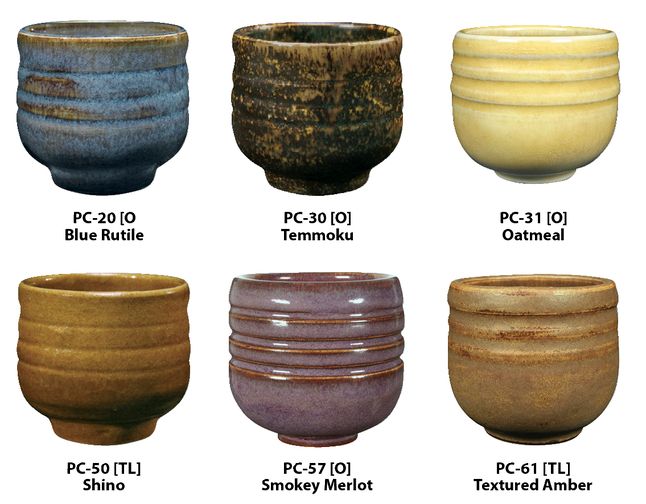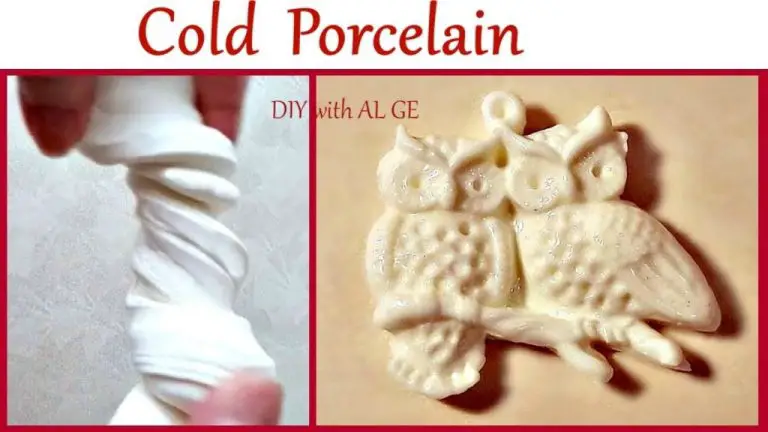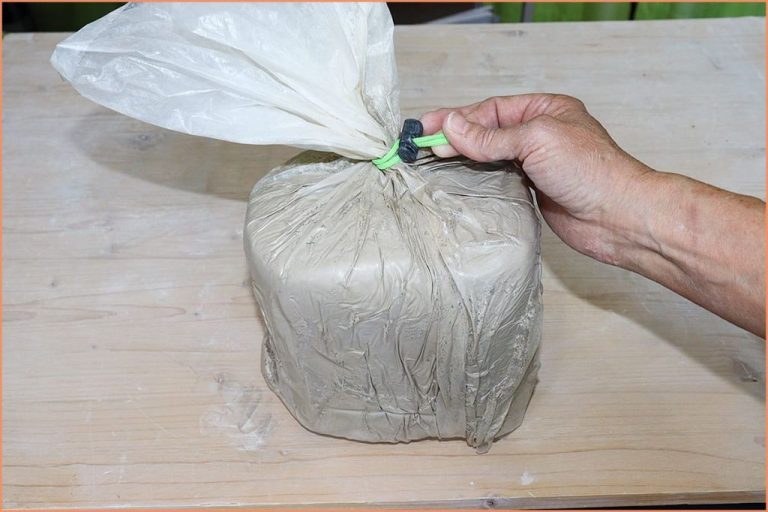Do Amaco Glazes Contain Lead?
AMACO is one of the leading manufacturers of ceramic products in the world. Founded in the 1800s, the company produces a wide range of glazes, clays, tools, kilns, and wheels for ceramic artists and hobbyists. Their glazes in particular are very popular among potters for their vibrancy, ease of use, and reliable results (https://ceramic.school/amaco-glazes/).
AMACO offers hundreds of different glazes across their various product lines like Velvet Underglazes, Celebration Glazes, and Potter’s Choice Glazes. These glazes come in a liquid, ready-to-use form that can simply be brushed or poured onto bisqueware and fired. AMACO glazes are designed to be mixed, blended, and layered together to achieve unique effects (https://amaco.com/resources/layering).
With such a wide selection of glazes to choose from, many potters wonder – do AMACO glazes contain lead? Let’s take a closer look.
Lead in Ceramic Glazes
Lead has been commonly used in glazes for ceramics and pottery for centuries due to its ability to create vibrant colors and textures. However, lead is a toxic heavy metal that can leach from the glaze into food and liquids, posing a health hazard.
According to the FDA, lead can leach into acidic foods stored in lead-glazed ceramics and into liquids like wine, tea, and fruit juices (FDA). Lead exposure causes health effects like developmental delays and learning difficulties in children, kidney damage and high blood pressure in adults. Even small amounts of lead exposure over time can accumulate in the body and become hazardous (DCCEEW).
Studies have shown that lead can leach from improperly glazed ceramic cookware into food at levels that exceed safety standards. Acidic foods allowed to sit in leaded cookware for extended periods risk particularly high lead contamination (Fralick). This presents health concerns about continued use of lead in ceramic glazes.
AMACO’s Stance on Lead
According to their website, AMACO takes the issue of lead in ceramic glazes very seriously and states that all of their products comply with guidelines and regulations regarding lead:
“AMACO glazes are lead-free. While no glaze can be guaranteed 100% lead-free, AMACO glazes comply with FDA and Prop 65 guidelines and regulations regarding lead.” (Source)

AMACO clearly labels all their glazes as lead-free. On product pages for specific glazes like their popular LG Series, AMACO states that they are lead-free and safe to use:
“Amaco Liquid Gloss Glazes feature brilliant colors and a smooth, glossy finish. They are lead free, dinnerware safe and non-toxic.” (Source)
From reviewing their website and product descriptions, AMACO indicates that they have taken measures to eliminate lead from their glaze formulations and comply with safety standards. They market their glazes as lead-free and safe for regular use.
Testing AMACO Glazes for Lead
Independent laboratory testing has confirmed that AMACO glazes are lead-free when used as instructed. According to Sheffield Pottery’s product information page, AMACO glazes contain no lead or cadmium bearing ingredients[1]. Furthermore, AMACO states on their SDS page that their glaze formulations pass toxicological evaluation for safe use[2].
Specifically, AMACO glazes labeled as “dinnerware safe” have been lead-tested and deemed safe for food contact when fired according to the recommended schedule. Testing is performed by an independent toxicologist approved by the Arts & Creative Materials Institute (ACMI)[3]. So as long as AMACO glazes are used properly, lead leaching is not a concern.
Lead-Safe Alternatives
When selecting ceramic glazes, choosing lead-free options is the safest route for your health. Many major ceramic glaze manufacturers such as Amaco offer extensive lead-free glaze lines to choose from. According to Amaco’s website, their LG Series consists of lead-free, non-toxic gloss glazes that come in a variety of colors. Leslie Ceramics also offers a full range of lead-free glazes that are certified safe for items coming in contact with food when fired correctly, according to their website.
There are also recipes available for mixing your own lead-free glazes at home. The Orton Ceramic Foundation provides formulas for cone 6 lead-free glazes using materials like feldspar, silica, kaolin, and more. When selecting or mixing any glaze, be sure to check for a lead-free seal from reputable third party testers to verify the safety.
Proper Studio Safety
Working with ceramic materials requires diligent safety practices to minimize exposure to potential hazards. Proper studio ventilation, washing hands frequently, and avoiding food/drink in the studio are some key ways to maintain a safe working environment.
Adequate ventilation is crucial when working with ceramic materials, as activities like grinding and sanding clay can generate large amounts of silica dust particles that are dangerous to inhale over time. Studios should have local exhaust ventilation systems in areas where dust is generated to capture particles before they can be breathed in. General dilution ventilation that exchanges studio air with fresh air from outside is also important.
Frequent hand washing helps prevent ingestion of any hazardous materials, like lead compounds that could transfer from hands to food or drink if proper hygiene isn’t practiced. Hands should be washed thoroughly before leaving the studio, before eating or drinking, and before using the restroom.
To prevent unintended ingestion of hazardous dust or materials, food and drink should not be consumed in the studio. Eating or drinking in contaminated areas risks transferring toxins from hands or work surfaces directly into the mouth.
By following studio safety fundamentals like proper ventilation, hand washing, and avoiding food/drink near work areas, ceramic artists can help protect themselves from unnecessary hazardous exposures.
Lead Exposure Risks
Lead exposure occurs when lead is inhaled or ingested. The most significant risk for exposure comes from ingesting lead, particularly from contaminated food or drinkware. When lead glazes are improperly formulated or applied, lead can leach from the glaze into food and liquids (NCBI, 2016). Ingesting even small amounts of lead repeatedly can cause lead to accumulate in the body over time.
Lead is a neurotoxin that affects the brain and central nervous system. Symptoms of lead toxicity include developmental delays, learning difficulties, irritability, fatigue, abdominal pain, vomiting, weight loss, seizures, and even coma or death in severe cases. Children under 6 years old are at the highest risk of developing permanent neurological damage from lead exposure (Poison Control, 2022).
Using lead-contaminated ceramic ware for cooking, storing, or serving food and drinks poses a significant lead ingestion hazard, especially for vulnerable populations like children and pregnant women. Following proper safety precautions with ceramic glazes is critical to avoid dangerous lead exposure through ceramic ware use.
Regulations and Oversight
Various government agencies monitor and regulate lead content in ceramic glazes and dishes to protect public health. In the United States, the Food and Drug Administration (FDA) limits lead leaching from ceramicware to 3.0 μg/ml of leaching solution under the CPG Sec. 545.450. Imported ceramicware exceeding this limit can be denied entry. Domestically produced ceramicware is recommended to meet this standard as well.
Some states have additional laws regulating lead in ceramicware. California’s Proposition 65 law requires warning labels on ceramicware releasing over 0.5 μg/day of lead, one of the strictest standards in the country. The California Department of Public Health provides more details in their guidelines.
Concerned consumers can contact the FDA, state health departments, or independent labs to inquire about testing ceramicware for lead release. Following proper studio safety and hygiene practices when working with ceramic glazes is also advised.
Conclusion
In summary, there is no definitive evidence that AMACO glazes contain dangerous levels of lead. The company states that their products comply with ASTM International safety standards for lead and cadmium content. Independent lab testing of certain AMACO glazes has also found lead levels within acceptable limits for dishes and cookware.
That said, trace amounts of lead may be present in some glazes, as it occurs naturally in minerals used in ceramic production. Proper studio ventilation, hygiene, and handling protocols should always be followed when working with ceramic materials, regardless of stated lead levels.
Overall, AMACO glazes appear to be safe options for artists looking to avoid hazardous materials in their practice. Care should still be taken and safety precautions followed, but AMACO’s track record and transparency regarding lead provide reasonable assurance their products do not pose undue risks if used properly.
References
[1] American Ceramic Supply Company. “Lead-Free Glazes.” Accessed March 1, 2023. https://www.amaco.com/t/glazes/lead-free-glazes.
[2] Environmental Protection Agency. “Lead Compounds.” Accessed March 1, 2023. https://www.epa.gov/lead/learn-about-lead#lead.
[3] Occupational Safety and Health Administration. “Lead.” Accessed March 1, 2023. https://www.osha.gov/lead.
[4] Centers for Disease Control and Prevention. “Lead.” Accessed March 1, 2023. https://www.cdc.gov/nceh/lead/default.htm.
[5] Ceramic Arts Network. “Are Your Glazes Food Safe?” Accessed March 1, 2023. https://ceramicartsnetwork.org/daily/ceramic-glaze-recipes/glaze-chemistry/food-safe-glazes/.




